People living in poverty near Soccer City stadium outside Johannesburg battle police during anti-World Cup protests. Local residents demand houses rather than world-class stadiums.
Recommended reading: Ashwin Desai’s The Poors and this article.
Author: Peter Alegi
Top 100 Football Grannies
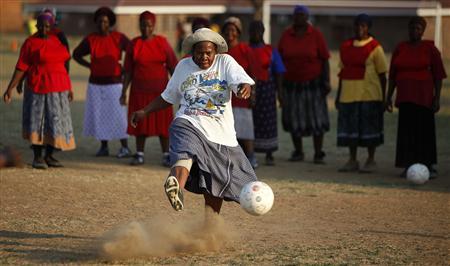
Keeping football real. Hundreds of older South African women play the game after cleaning houses, cooking meals, or selling food in township streets. 83-year-old Nora Makhubela, a survivor of eight strokes, told Reuters: “I pray every day to God to keep me alive until 2010. I would really love to watch the games,” she said. Vakhegula Vakhegula (“grannies” in the local language) might even teach Bafana Bafana a thing or two.
Click here to read Ndundu Sithole’s story.
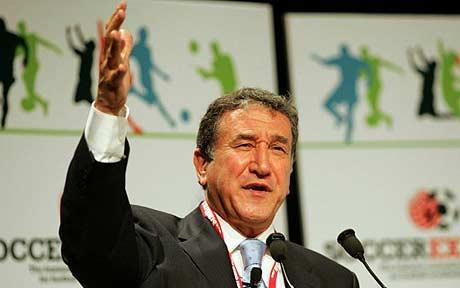
He ain’t no Moses. But it’s official. Carlos Alberto Parreira is back as Bafana coach through the 2010 World Cup. And laughing all the way to the bank, again.
This time, however, he’ll have to deal with resentment in South Africa over his reappointment, particularly among those who believed the time was right for a local coach to get the nod. Some sources say that SAFA is trying to deflect this criticism by striking a deal with Gavin Hunt, coach of Supersport, to take over Bafana after the World Cup.
The leadership that served South Africa so well in the “negotiated revolution” from apartheid to democracy appears to have kept its distance from the country’s football politics.
European Playoffs: The Draw
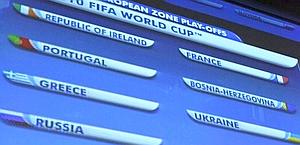
Ireland v France: What ever happened to the “luck of the Irish”?
Portugal v Bosnia-Herzegovina: Corporate sponsors breathe huge sigh of relief — Ronaldo is headed to South Africa.
Greece v Ukraine: Mediterraneans in the steppes in mid-November? Ouch.
Russia v Slovenia: Revisiting the Tito-Stalin split.
November 14 and 18.
Wanted: a Moses for Bafana Bafana
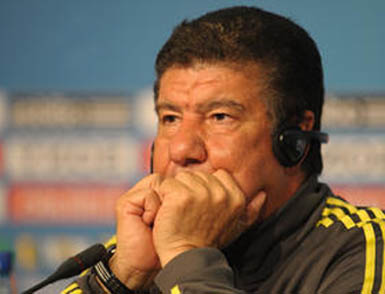
Bafana’s Brazilian coach, Joel Santana, is out of a job. Pallid performances and pitiful results sunk the former Flamengo coach. “In the bigger picture and the interest of the country,” said Mandla Mazibuko, SAFA vice-president, “he [Santana] realized while he was doing his best, his best was not good enough.”
Hand-picked by Bafana’s previous coach and fellow brasileiro Carlos Alberto Parreira, Santana lasted 18 months at the helm of the national side of the 2010 World Cup host country. His most notable achievement was a 4th-place finish in the 2009 Confederations Cup, which some critics opined was assisted by a lucky draw that placed South Africa in a group with minnows New Zealand and Iraq.
Football-mad South Africans have every reason to be worried. A few months before the World Cup and Bafana are rudderless and adrift. SAFA’s decision about Santana’s successor may be announced on Friday. Parreira is lurking in the shadows.
Update (10/24/09): Back to the Future : Parreira’s officially back.
Maradona is Coming to South Africa
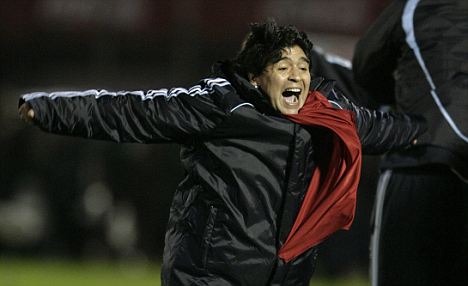
Argentina’s 1-0 win in Montevideo ended the qualification telenovela. El Pibe’s charges earned their ticket to South Africa on the sacred ground of Centenario stadium, where Uruguay defeated Argentina in the inaugural World Cup final in 1930. So Maradona, with all his contradictions and flaws, got the job done. Improvisation can work. In South Africa, Diego hopes to realize his dream of meeting Nelson Mandela.
When I was growing up in Italy as a Juve fan (long story), I had no time for El Pibe. My idol was Michel Platini. After I moved to America, my view of Diego slowly began to change. Not only had he won the ‘86 World Cup almost single-HANDedly, but he then delivered Napoli’s first Italian titles (scudetti) while Platini bowed out of the game.
When I was in college in the late 1980s Italian football was difficult to find on TV. But I was lucky to be a few blocks from a small local station in Hartford (Conn.) that catered to a large Italian-American community. The transmitter had a range of only a few miles, but it got the RAI feed from New York! As a result, I got to delight in Diego’s magical, illuminating inventions, a sometimes perfect synthesis of creativity and pragmatism (i.e., goals, assists, wins). Of course, I was livid when his Argentina beat us in Naples on penalties at Italia ‘90 — the only Italy match I did not attend — but time has healed that painful wound.
Ultimately, as we know, Maradona’s injuries, drug use, and other off-the-field problems undermined his ability to do what he did best — play. His flaws and contradictions, regrettably, sank him lower and lower. Yet I remember that as the tide began to turn against Maradona in Italy (after the 1990 World Cup), he had the audacity and sincerity to go on national TV and say what no Italian dared to say. When the anchor asked him whether he was taking drugs, “Maracoca” shot back: “I am not doing anything captains of industry aren’t doing.” Maybe not the smartest thing to say, but absolutely true.
I have not yet seen Kusturica’s film, but here’s a clip of Maradona that inspired me back in the “good ol’ days”: http://www.youtube.com/watch?v=cJXqFGYenRY
Pharma-calcio
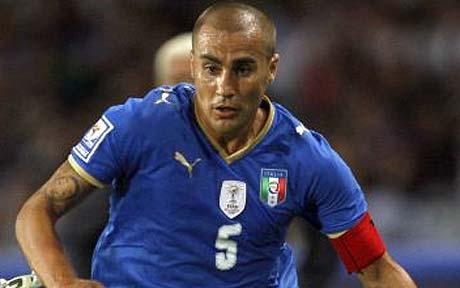
By now you’ve heard the news: 2006 World Player of the Year and Italy captain Fabio Cannavaro failed a doping test in late August, testing positive for cortisone. The Italian football establishment–players, coaches, officials, media–came out in his defense. “The cortisone was lifesaving treatment for a bee sting!” it was claimed. “I was once stung by a wasp,” joked his manager at Juve, “but it was not the same as Cannavaro’s, as there was no need for me to use cortisone.” (I thought adrenaline injections or inhalers were the best emergency treatment for stings.) Skeptics wonder why it took two months for the positive test to be publicized. “It’s just a bureaucratic mistake,” proffered the Italian national team doctor. Given the well documented history of performance-enhancing drugs in Italian football, and in world sport more broadly, these explanations invite scrutiny.
It was in August 1998 that AS Roma manager Zdenek Zeman stunned us with revelations about widespread doping in Serie A. A few weeks later, Italy’s only IOC-accredited anti-doping laboratory was shut down (for one year). Cannavaro himself was implicated in PED use after being shown on national TV enjoying an IV drip of Neoton in a Moscow hotel room before the 1999 UEFA Cup final, a fact confirmed by his lawyer. And Juve’s current manager, Ciro Ferrara, played for Marcello Lippi’s pharmaceutically enhanced Juve side in the 1990s, a team whose physician received a 22-month suspended sentence for his involvement. Several years and one World Cup triumph later, the specter of pharma-calcio is still with us.